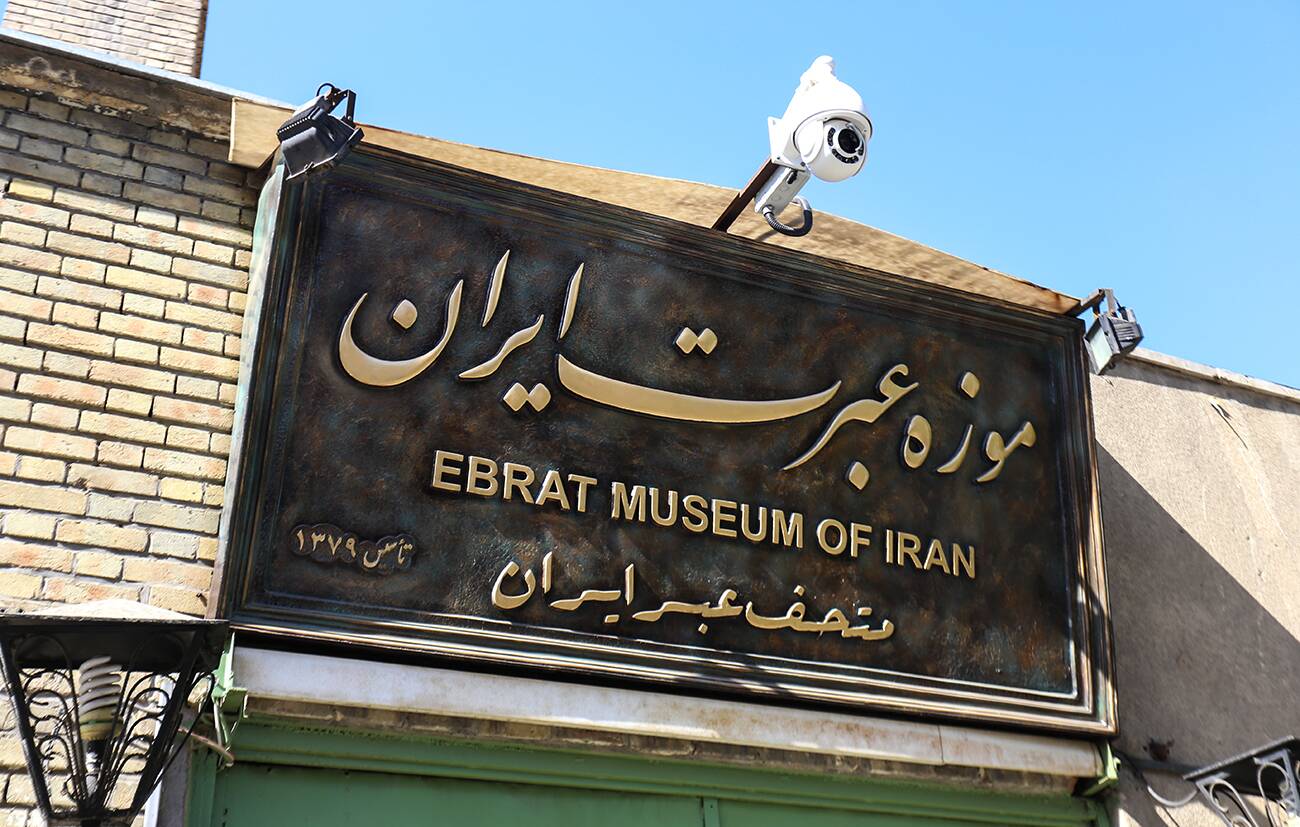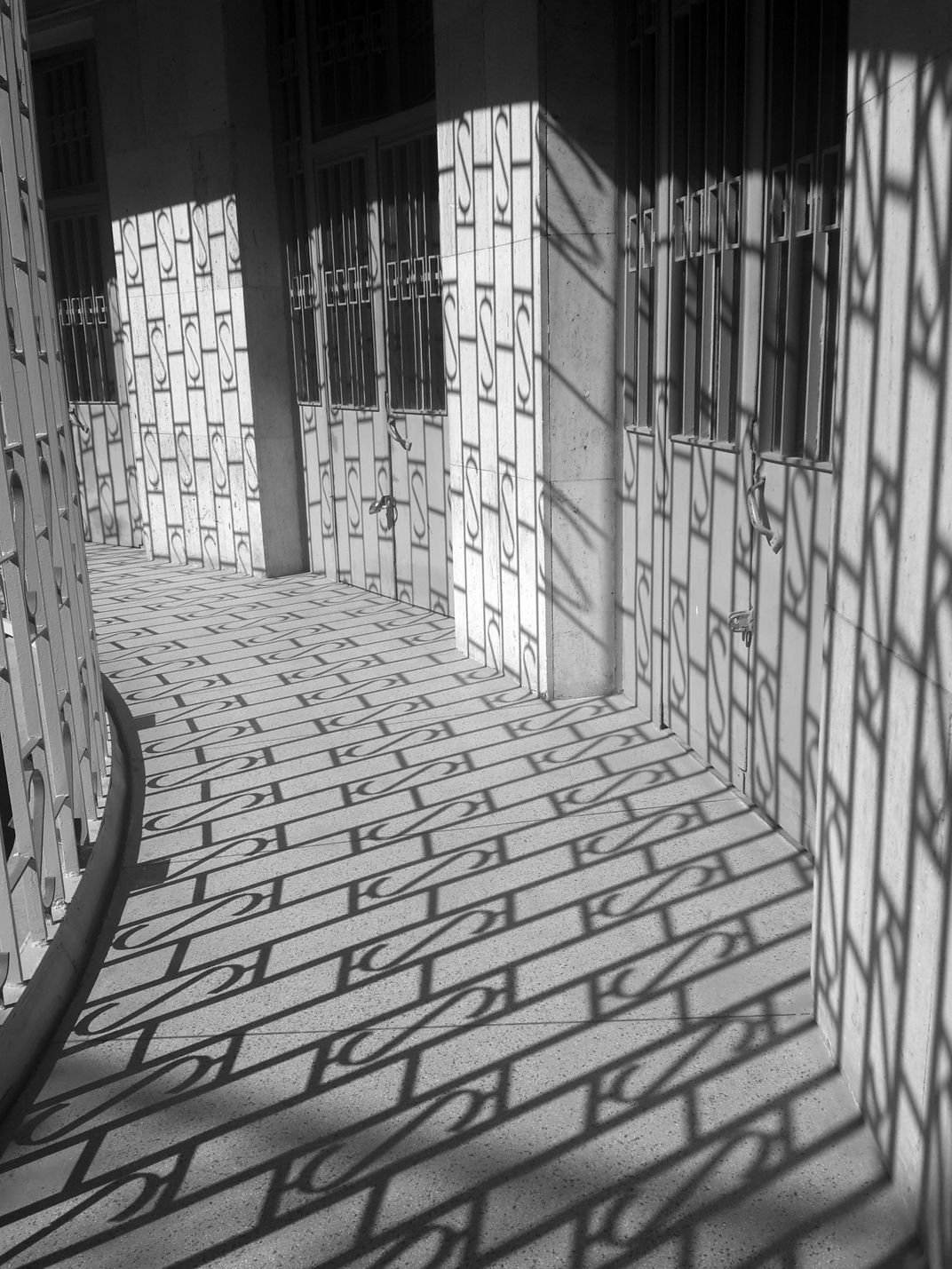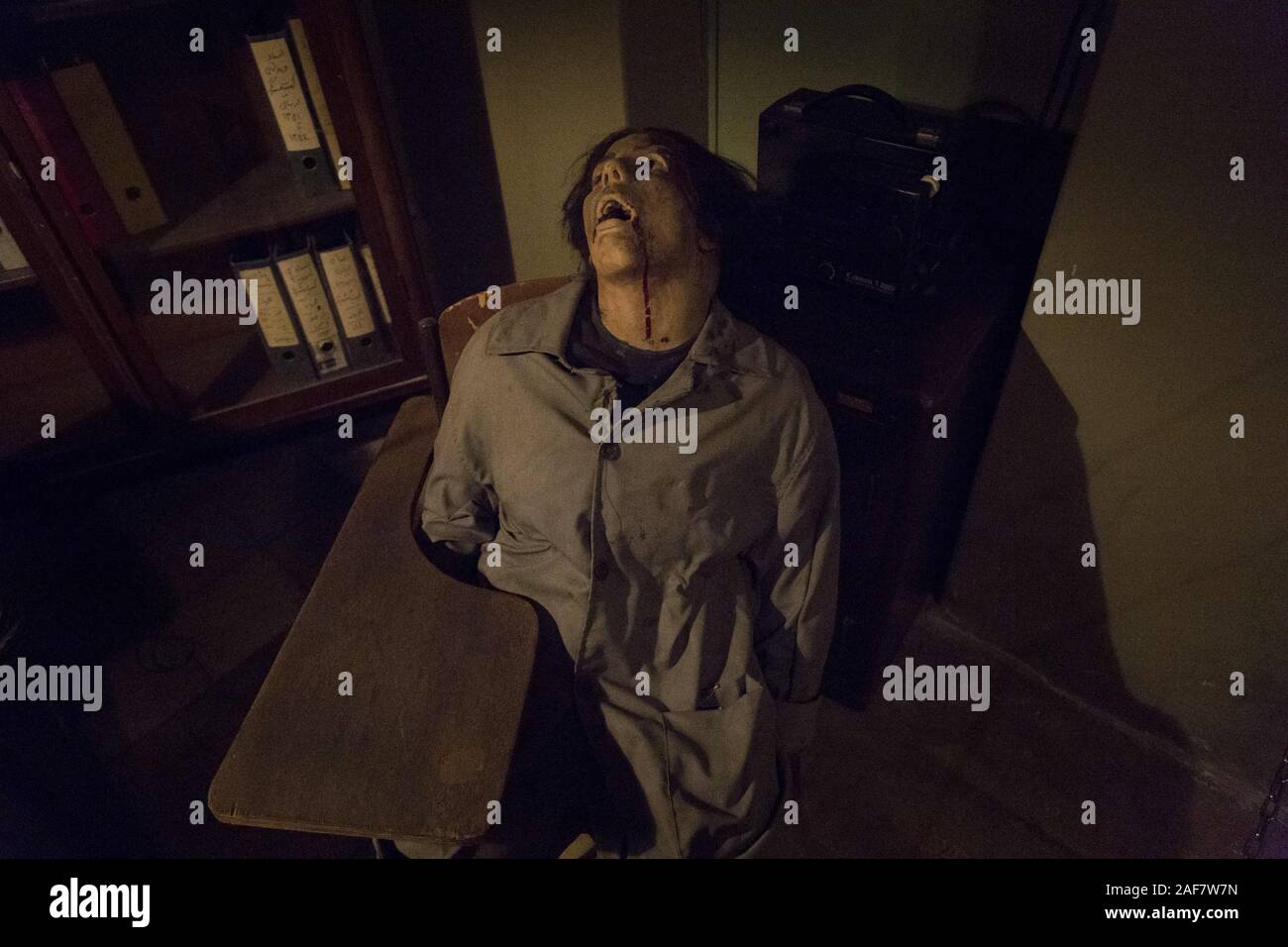Ebrat Museum Of Iran: A Poignant Journey Through History's Darkest Pages
The Birth of a Prison: From Modernity to Misery
The origins of what is now the Ebrat Museum of Iran trace back to 1932, a period when Iran was undergoing significant modernization under Reza Pahlavi (Pahlavi I). It was during this time that the facility was constructed by German engineers, designed to be the first modern prison in Iran. This initial purpose, to introduce modern penal practices, stands in stark contrast to the horrific uses it would later be put to. Initially, the prison served various functions, including as a temporary holding facility and even a women's prison. However, its most considerable and infamous use occurred during the era of Mohammad Reza Pahlavi (Pahlavi II), the last Shah of Iran. Under his rule, particularly in the 1970s, this site became a central instrument of the country’s secret police, the SAVAK (Sazeman-e Ettela'at va Amniyat-e Keshvar), an organization known for its brutal suppression of dissent. It was during this period that the prison earned its chilling reputation as one of the most horrifying torture chambers in Iranian history, marking it as a dark chapter in the nation's contemporary narrative.Architectural Design: A Fortress of No Escape
Before visitors even delve into the harrowing exhibits within, the mysterious architecture of the Ebrat Museum in Tehran leaves an immediate and unsettling impression. The prison's design is notably circular, a layout that was not merely an aesthetic choice but a crucial element in its function as an impenetrable detention center. This unique and ominous architecture was meticulously planned to ensure that any effort by escapees would end in abject failure. The circular design, often associated with panopticon-like structures, allowed for maximum surveillance with minimal staff, fostering a constant sense of being watched among the prisoners. Its intricate layout, combined with robust construction, created a labyrinthine environment from which escape was virtually impossible. This architectural ingenuity, originally conceived for a "modern" prison, ironically became a key component in the psychological and physical torment inflicted upon its detainees. The very structure of the building served as a silent accomplice to the cruelties committed within its walls, a testament to the meticulous planning behind its role as a tool of repression.The Reign of Terror: The Shah's Secret Police and Political Prisoners
The most chilling period in the history of the Ebrat Museum, before its transformation, was its operation as a political prison run by the Shah's secret police during the Mohammad Reza Pahlavi era. This circular Iranian jail became synonymous with the systematic oppression of political dissidents, evolving into one of the most feared torture chambers in the country. The museum today is dedicated to unveiling the atrocities committed during this period, providing a stark reminder of the regime's brutal tactics.A Glimpse into the Past: Accounts of Torture
The exhibits within the Ebrat Museum of Iran offer a very detailed and disturbing account of the torture inflicted by the previous regime, which was notably backed by the United States, against anyone who dared to disagree with them. Through meticulously recreated scenes, artifacts, and testimonials, the museum showcases the brutal past of political detainees. Visitors are confronted with the reality of the physical and psychological torment endured by prisoners, from various forms of interrogation to methods designed to break their spirit. This unflinching portrayal serves as a powerful educational tool, ensuring that the extent of the cruelty and the suffering of the prisoners are neither forgotten nor diminished. It is a raw and honest depiction that forces contemplation on the dark side of power and the consequences of suppressing human rights.Notable Detainees: Voices from the Cells
Among the countless individuals who suffered within the walls of this notorious prison, many prominent figures of Iran's political landscape were once held captive. The Ebrat Museum in Tehran specifically showcases the brutal past of political detainees, including Ayatollah Khamenei, who would later become Iran's Supreme Leader. His presence within these walls underscores the widespread nature of the regime's crackdown on opposition, affecting individuals from all walks of life and political persuasions. The museum strives to preserve the stories of these political prisoners, ensuring that their experiences and the horrors they endured are remembered. By highlighting the narratives of those who were incarcerated, the Ebrat Museum provides a human face to the statistics of repression, emphasizing the personal cost of political dissent and the profound impact on individuals and families. It offers a poignant journey through Iran’s history, allowing visitors to gain a deeper understanding of the struggles faced during that era.Transformation to Museum: From Prison to Poignant Memorial
Following the Islamic Revolution of Iran, a pivotal moment in the nation's history, this notorious site underwent a profound transformation. What was once a symbol of state repression and human suffering was repurposed into a museum, specifically to expose the cruelty and the inhumane ways prisoners were kept and tortured under the previous regime. This conversion was a deliberate act to ensure that the dark chapter of the prison's history would serve as a public lesson. The Ebrat Museum was officially founded in 2002, marking its formal establishment as a public institution dedicated to memory and education. Its mission is clear: to promote useful knowledge about political prisoners and the anti-sabotage joint committee of Mohammad Reza Shah. This is achieved through excellence in scholarly research, publication, cultural products, and translation, ensuring that the historical narrative is accessible and well-documented. The museum's existence is a testament to the commitment to remembering the "bad times" and understanding the mechanisms of oppression, making it a crucial site for historical reflection and education in contemporary Iran.The Ebrat Museum as Dark Tourism: Confronting the Past
The Ebrat Museum of Iran is increasingly recognized as a significant site within the realm of "dark tourism." This category of tourism involves visiting places historically associated with death, tragedy, or suffering. While the concept might seem morbid to some, sites like the Ebrat Museum offer profound educational and reflective experiences, encouraging visitors to confront uncomfortable truths about human history. Visiting the Ebrat Museum provides a unique opportunity to gain a deeper understanding of the struggles faced during that era. It's not merely a historical exhibit; it's an immersive experience designed to evoke empathy and provoke thought. The museum compels visitors to reflect on the importance of human rights and justice in our world today. By walking through the very cells and torture chambers where countless individuals suffered, one is forced to acknowledge the fragility of freedom and the critical need for vigilance against all forms of oppression. This aspect of dark tourism serves a vital role in historical remembrance, ensuring that the lessons learned from past atrocities are carried forward to inform and shape a more just future.Challenging Narratives: A Contrast to Western Propaganda
The Ebrat Museum of Iran serves a dual purpose beyond merely documenting historical atrocities; it also presents a compelling narrative that offers a useful contrast between the ancient and modern history of Iran. While Iran boasts a rich and glorious ancient past, often highlighted in cultural and historical tours, the museum starkly confronts the more recent, painful chapters of its contemporary history. This juxtaposition allows visitors to appreciate the full spectrum of Iran's historical journey, from ancient empires to modern struggles. Furthermore, the museum presents an interesting challenge to typical Western propaganda against the Iranian state. By focusing on the brutalities committed by the previous, US-backed regime, the museum provides a perspective that often differs from the dominant narratives in Western media. It highlights the internal struggles and the experiences of oppression under a government that was supported by Western powers, thereby inviting a more nuanced and critical understanding of Iran's political evolution. This approach encourages visitors to question preconceived notions and to engage with a more complex historical truth, fostering a deeper, more informed dialogue about the country's past and present.Preserving Memory: The Importance of Human Rights and Justice
At its core, the Ebrat Museum of Iran stands as a powerful testament to the critical importance of preserving memory, particularly when it pertains to human rights and justice. The museum was established to honor the memory of the countless individuals and families whose sacrifices constitute an important chapter in the nation’s history. It is a space where the echoes of past suffering resonate, not to dwell on despair, but to underscore the enduring value of human dignity and freedom. Through its comprehensive displays and detailed accounts, the Ebrat Museum facilitates a deeper understanding of the struggles faced during the era of political repression. Visitors are not just passive observers; they are invited to reflect on the profound importance of human rights and justice in our world today. The museum serves as a poignant reminder that vigilance against oppression is perpetual and that the lessons of history must be continually revisited to prevent similar atrocities. It reinforces the idea that remembering the past is not just an academic exercise, but a moral imperative, essential for fostering a society that champions justice and respects the fundamental rights of every individual.Planning Your Visit: Experiencing the Ebrat Museum
For those planning to explore the rich and complex tapestry of Iranian history, a visit to the Ebrat Museum in Tehran is an indispensable, albeit sobering, experience. Located in the bustling capital, the museum is easily accessible for travelers. The Iran Travel Agency, among others, is ready to help you plan your journey to Iran, ensuring a smooth and enriching travel experience that can include this significant site. The Ebrat Museum is known as one of the "horror museums of Iran" due to its unflinching portrayal of the past, but it is designed to take visitors on an immersive and educational journey. While in Tehran, visitors might also consider exploring other cultural landmarks such as the Malek National Library & Museum. On display at this private museum and library are pieces from the collection of Hadji Hussein Agha Malek, who in the 1930s was one of the richest men in Iran, offering a different perspective on the nation's heritage. The significance of the Ebrat Museum is also highlighted by notable visits, such as that by the President of the Islamic Republic of Iran Broadcasting, Mr. Dr. Abdolali Ali Asgari, and his family, underscoring its continued relevance and importance within Iranian society. Before you get amazed by what you are going to see in the Ebrat Museum in Tehran, be prepared to be shocked by its mysterious architecture and the powerful stories it holds within its walls.Conclusion
The Ebrat Museum of Iran stands as a powerful and essential monument to a critical period in the nation's contemporary history. From its origins as the first modern prison built by German engineers in 1932, through its dark transformation into a notorious torture chamber under the Shah's secret police, to its current role as a museum, its story is one of profound transformation and enduring relevance. It is a place where the architectural ingenuity designed for control meets the harrowing human stories of political prisoners, including figures like Ayatollah Khamenei. Founded in 2002, the Ebrat Museum in Tehran serves not only as a stark reminder of the cruelties inflicted upon dissidents but also as a vital educational institution. It promotes a deeper understanding of human rights and justice, challenging conventional narratives and urging visitors to reflect on the importance of vigilance against oppression. As a significant site of "dark tourism," it offers a poignant journey that confronts the past to inform the present and future. We encourage you to embark on this deeply moving journey through Iran's history. A visit to the Ebrat Museum of Iran is more than just a tour; it is an opportunity to bear witness, to learn, and to reflect on the universal values of human dignity and freedom. Share your thoughts on the importance of such museums in preserving history and fostering human rights in the comments below, or consider sharing this article to spread awareness of this compelling and vital institution.
Ebrat Museum | Visit iran

Ebrat Museum | Smithsonian Photo Contest | Smithsonian Magazine

Iran ebrat museum High Resolution Stock Photography and Images - Alamy